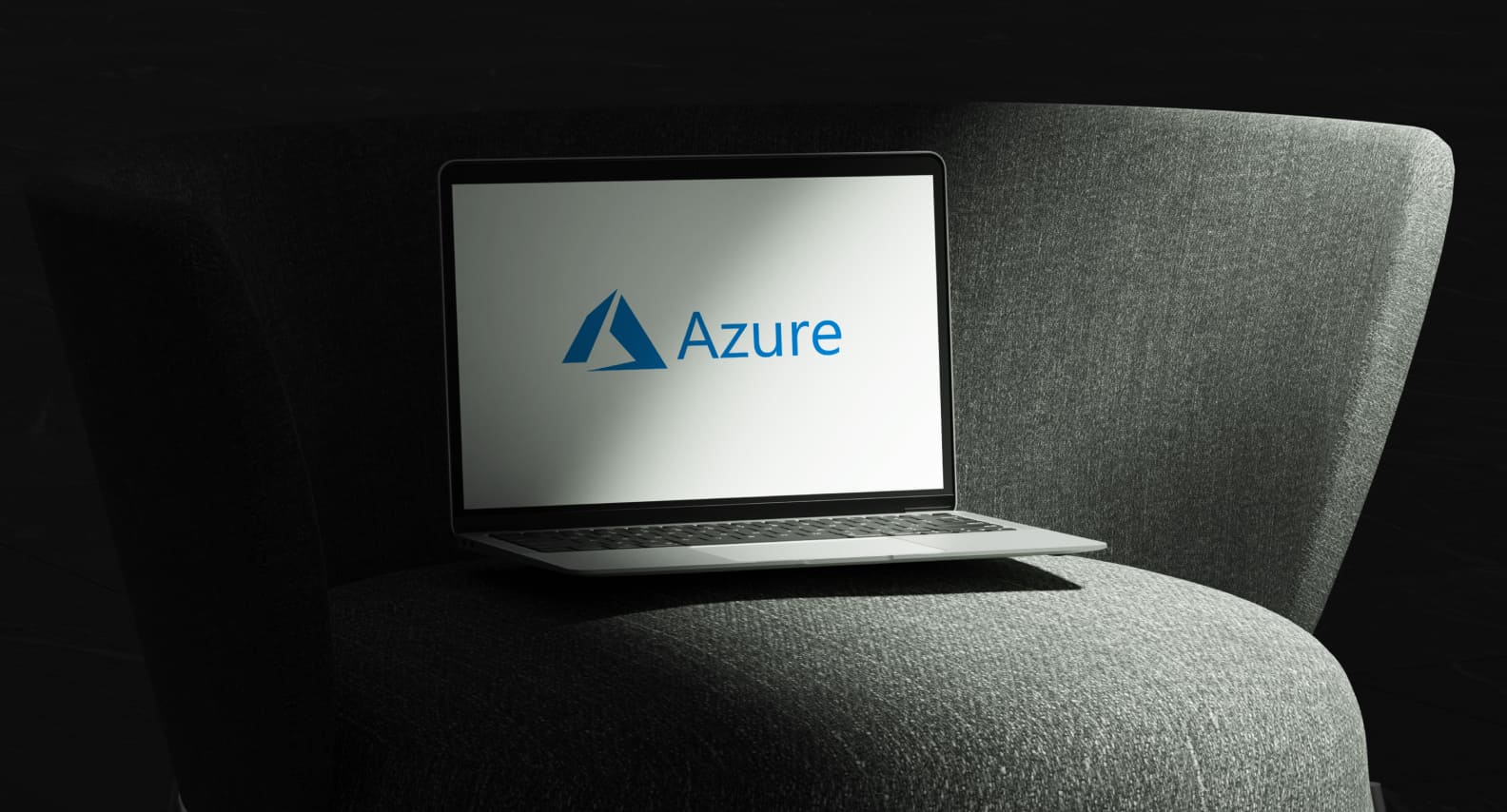Cloud Migration: Azure as a Solution
A recent Microsoft survey reports that 82% of IT decision-makers consider “migrating to the cloud as a stepping stone toward digital transformation.” That enables Microsoft Azure to be among the most widely used cloud platforms when migrating current applications and other critical business elements from the premises services to a cloud environment. This platform is perfect for large IT environments with strict compliance and data security requirements. And during the years, Azure has transformed into a robust cloud ecosystem.
The appropriate Microsoft Azure cloud migration assists organizations in securing their assets, optimizing costs, and achieving resilience. Additionally, Azure-managed services aid in reducing operational overhead and enable development and operations teams to allocate more time to their core tasks. The good news is that Microsoft provides a well-structured, step-by-step process for the migration to Azure Cloud, supported by automated tools and guides designed explicitly for such migration projects.
Below, we will dive deeply into Azure cloud migration, the key reasons to conduct it, and the challenges it may provoke. And we will also analyze the fundamental steps and required toolkit to ensure the proper migration process.
What is Azure Migration?
Azure cloud migration refers to transferring on-premise or cloud workloads from cloud service providers like Google Cloud or Amazon Web Services (AWS) to Azure. This migration aims to reduce expenses and complexity while enhancing security and scalability. Such a concept also extends to multi-cloud technology, which encompasses public, private, and hybrid clouds, or a combination of multiple clouds, to handle specific business processes effectively.
There are several extra Azure cloud migration benefits, including:
Azure provides various built-in migration tools and cloud services, which can significantly simplify the entire cloud migration process.
Leveraging Azure’s distinctive features like serverless computing and artificial intelligence services.
Five Key Reasons for Azure Cloud Migration
Azure Cloud is a preferred option for numerous organizations. According to Microsoft, “95% of Fortune 500 companies trust their business” on this cloud platform. Meanwhile, Statista reports that Azure holds a 21% share of the international cloud services market. But what are the main reasons for such popularity? Let’s check them below.
Cost savings
Having team members with access to the correct data at the proper time enables them to make timely adjustments that directly influence the financial outcome and product quality. Thus, discovering cost-saving opportunities early on is critical to success, so proactive identification and action are vital in maximizing savings.
You should monitor cost indicators as they fluctuate. That allows you to assess whether your costs follow a usual trend or if any abnormal activities may result in significant excess. If dissatisfied with the results, you can promptly take some measures to avoid further losses.
Conversely, if the associated workload shows potential for increased earnings, you should allocate additional resources to support it. Thus, a cost platform with real-time reporting and anomaly detection capabilities is essential to achieve these actions effectively.
Data security and compliance
Data security, privacy, and compliance are fundamental aspects of a robust cloud system, and Azure excels in all three areas. The foundation and structure of the platform revolve around an advanced cloud security environment. It leverages powerful, intelligent analytics, security governance policies, and multiple layers of protocols to safeguard data and protect users. By utilizing Azure, you enhance the overall security posture of your entire company.
Furthermore, Azure provides dozens of compliance offerings, guaranteeing that your business adheres to data protection and privacy standards such as PIPEDA, CPPA, HIPAA, and The Privacy Act. That ensures that Azure supports your organization in complying with industry-specific and legal data security regulations, giving you peace of mind.
Easy integration and scalability
Azure enables seamless integration with current applications and services, facilitating swift migration of premises workloads for businesses without interruptions or downtime. Besides, scalability in the cloud environment is crucial for fostering business agility. Azure recognizes the significance of scalability and incorporates it as a fundamental aspect. Whether you are a small or medium-sized business with just a handful of employees or a large global conglomerate, all organizations can effectively utilize Azure.
You can select an Azure package that aligns perfectly with your size, digital requirements, and available IT budget. And after all, you can easily adjust the Azure capabilities to scale up or down based on varying computing needs and business goals.
Better performance and reliability
Since everything operates on Microsoft’s virtual servers rather than on hardware owned by your company, there is reduced maintenance required on your part. With Azure migration, workloads and services are relocated in closer proximity to the client, resulting in reduced latency. In addition, Azure’s expanded storage capacity enables your existing applications to provide customers with faster solutions.
Accessibility from anywhere
You can access Azure’s cloud applications from anywhere in the world, which provides their convenient availability at all times. That enhances virtual collaboration and makes it easier for remote teams to cooperate. Meanwhile, global accessibility allows businesses to operate more efficiently by eliminating the constraints imposed by the locations of physical servers and geographic boundaries.
Things to Consider Before Azure Cloud Migration
Effective planning is essential before undertaking migration to an Azure environment. That involves considering the following critical things:
BUSINESS NEEDS
Defining the project needs at the beginning is vital to guarantee a successful migration to Azure. What are the desired outcomes of moving your workloads to the cloud? Are you seeking cost savings or performance enhancements? Do you require scalability or flexibility? Before committing, carefully evaluate the advantages and disadvantages of the migration. Moreover, ensure that your migration goals align with your company’s overall objectives.
PERFORMANCE
You should determine the required IOPS (input/output operations per second) to ensure smooth performance and avoid lags and delays in the new Azure cloud environment. Also, having a system that will perform appropriately in the case of failures is crucial.
COMPLIANCE
Remember that even if your cloud provider is compliant, it does not guarantee compliance for your organization. While Azure holds various certifications worldwide, you must maintain legal compliance too. Thus, before embarking on your cloud journey, ensure your company has met all the industry-specific standards, allowing for a smooth transition into the cloud.
COSTS
The expenses related to cloud migration may vary significantly based on specific business requirements. A good piece of advice is to investigate any licensing obligations for hosting particular solutions in the cloud. Fortunately, Microsoft offers a comprehensive pricing guide covering all costs and licenses that refer to Azure migration tools.
MIGRATION STRATEGY
A comprehensive migration strategy should encompass all aspects of the particular process. When developing your strategy, consider key factors like budget, available staff, and the accessibility of Azure resources. Besides, there is a need to create a timeline that covers achievable milestones during the migration process.
SKILLS AND EXPERTISE
Cloud migrations demand a comprehensive set of skills and knowledge. To get the most from your investment, seeking a reliable cloud partner who will guide your organization throughout the relevant process is essential. With vast experience in providing DevOps services and Cloud Migration services, the Reenbit team can assist you from the initial phases to project completion and much more.
Steps to Successful Azure Migration
Developing a detailed cloud migration strategy is the primary and most crucial thing toward successful migration to Microsoft Azure. Subsequently, this strategy should involve the four critical steps.
-
STEP 1. ASSESS
The success of the first step depends on the following key aspects.
- Discovery. Utilize cloud migration assessment tools and gather an inventory of current servers (physical and virtual) in the existing environment. This inventory must contain comprehensive data and applications’ performance. Completing that provides server information and metadata, enabling you to proceed with the next steps.
- Mapping. Categorize and map servers based on their compatibility with on-premises applications, grouping them accordingly to reflect the latter. This process brings a comprehensive understanding of the applications and their interdependencies.
- Evaluation. After grouping the applications, it is vital to determine the most suitable cloud migration plan for each group. Here, you should analyze recommendations from Azure and learn about migration strategies. Next, evaluate the cost implications and select the best strategy for your requirements.
-
STEP 2. MIGRATE
The second step requires taking one of the four critical actions.
- Rehost. Migrate your applications to Azure without making any code modifications. This approach (also known as “lift and shift” migration) allows for transferring the apps as they are. But ensuring that the moved applications do not require any extra code changes and can be orchestrated directly within the Azure platform is crucial.
- Refactor. Here, minimal adjustments are made to the app design while keeping the code unchanged. The app will subsequently leverage the benefits of Infrastructure as a Service (IaaS) and Platform as a Service (PaaS) provided by Azure.
- Rearchitect. This approach requires adjusting the application code to ensure its compatibility with the cloud environment. That involves modernizing and modifying the code to enhance scalability or enable independent cloud deployment.
- Rebuild. This way, the application is fully rebuilt using cloud-native apps, an advantage of the Azure Platform as a Service (PaaS) offerings.
-
STEP 3. OPTIMIZE
This step also consists of three important sub-steps.
- Analyze. Utilize Azure Cost Management to examine your cloud spending with greater efficiency, accuracy, and transparency. This tool can assist you in effectively planning your investments in the future.
- Save. Effectively optimize your migrated environment to accommodate workloads by leveraging Azure’s distinct offerings, like Azure Hybrid Benefit and Azure Reserved Virtual Machine Instances.
- Re-invest. Take advantage of Azure’s flexibility to make modifications, enhance security, and implement advancements to the migrated and current workloads. All of that leads to significant cost savings.
-
STEP 4. SECURE AND MANAGE
Finally, there is a need to safeguard your information and apps with robust security, data protection, and monitoring options Azure offers.
- Secure. Utilize Azure Security Center to effectively manage cloud security and provide your cloud workloads with advanced threat protection. With Azure security, you get extra layers of protection, ensuring visibility and control over your cloud apps. After all, that enhances threat detection and improves recovery rates.
- Protect information. By backing up your apps in the Azure cloud, you can protect data against potential security threats. That helps mitigate additional costs, prevents business disruptions, and guarantees compliance with the required regulations.
- Monitor. With Azure Monitor, you can simplify the tracking of your cloud information, apps, and infrastructure. The tool also offers valuable insights and analytics to ensure you have the correct information at hand.
Azure Migration Tools
Below is a list of the Azure services frequently used to facilitate a successful migration. At Reenbit, our skilled team has the required skills and expertise to employ them effectively.
- Azure Migrate. This comprehensive tool assists in monitoring, managing, and executing all the front-end tasks appropriately.
- Azure Database Migration Service. Being user-friendly, this tool provides self-guided assistance with simple and clear steps, facilitating smooth migration.
- Azure Data Box. It helps with efficient data migration while ensuring strong security, even in the cases of an available limited network and time constraints.
- Azure Synapse Pathway. This migration tool automatically translates code to transfer current data warehouses to Azure Synapse Analytics.
- Azure Backup. This backup tool brings scalability, security, and cost-effectiveness, protecting different enterprise workloads.
- Azure Site Recovery. It aids in deploying replication, failover, and recovery activities to ensure continuous application functionality during outages.
- Data Migration Assistant (DMA). This tool performs an analysis of on-premise SQL servers to detect incompatibilities and specific errors, allowing for adjustments to facilitate effective data migration.
- SQL Server Migration Assistant. It provides data transfer to SQL Server and Azure Synapse Analytics.
Azure Migration Challenges and How to Address Them
Although Azure cloud migration brings many valuable benefits, it also comes with some critical challenges, including:
- Changes in a paradigm. The main challenge during the migration to Azure Cloud is a misunderstanding of concepts regarding cloud platforms and the premises environment. Thus, a management team must train employees on Azure’s features before migrating and prepare them for cloud paradigm changes.
- Local bandwidth provision. When developing an Azure cloud migration strategy, companies should estimate the required local bandwidth capacity in advance. In terms of hybrid cloud platforms, recognizing that the traffic that previously operated on a high-speed, low-latency LAN will now traverse the WAN is vital.
- Migration downtime. Unfortunately, downtime is unavoidable when migrating from physical services to cloud ones. Therefore, organizations should strategically plan all migration steps to minimize its impact.
- Basic dependencies. When moving applications to the cloud, considering the dependencies between them is crucial. That is because most applications depend on each other. So, there is a need to identify and establish the relevant configuration connections in advance to avoid any service disruptions.
- Security issues. One of the primary concerns when transitioning a premises infrastructure and software to a cloud environment is the potential data loss and security breaches. Organizations should adopt security protocols and establish a virtual private network (VPN) with end-to-end encryption to address it effectively.
- Application compatibility. In addition to databases, companies must ensure application compatibility with a cloud platform before the migration. Thus, they should deploy the necessary applications into the test environment offered by Azure and perform compatibility testing.
- Overcoming adversity. Significant data loss and application errors are almost impossible during smooth migration to Azure Cloud. However, being prepared for unexpected obstacles is essential, requiring an efficient resilience plan. Fortunately, with a reliable partner like Reenbit, clients get a complex understanding of unique disaster scenarios and guidance on how to react appropriately.
Conclusion
To conclude, Azure is an excellent choice for businesses of different types and sizes. Unlike traditional on-premises infrastructure, it operates entirely in the cloud, offering crucial benefits like better performance, cost-efficiency, and increased security.
But engaging in extensive research, familiarizing yourself with best practices, and exploring tools may take a lot of time. Besides, the potential cost savings pale compared to the risks associated with embarking on a complex cloud migration without the appropriate expertise.
Are you seeking assistance with the planning and execution of your Azure cloud migration? At Reenbit, we have a proven track record of successfully migrating numerous companies to the cloud. Contact us today to understand how to leverage Azure advantages and discuss how we can help your organization during all steps of the cloud journey.



